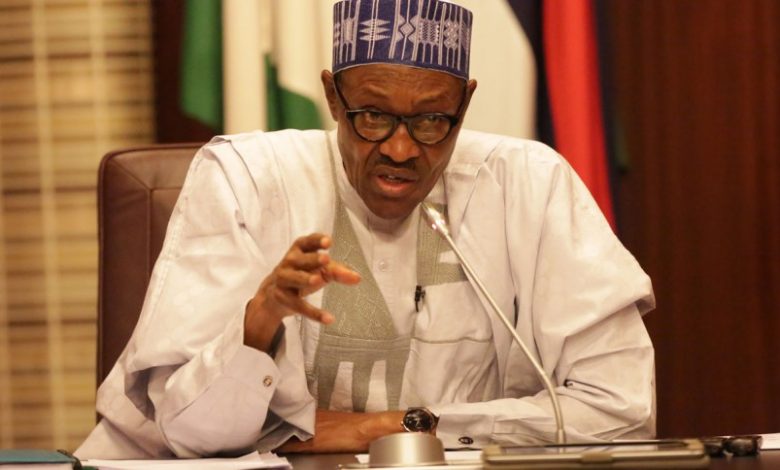Nigeria’s poverty exceeds World Bank projection, five states lead

The World Bank, which said that poverty reduction stagnated since 2015 under the regime of the President, Major General Muhammadu Buhari (retd.), projected that the number of poor Nigerians would hit 95.1 million in 2022.
This projection was made in its report titled, ‘A Better Future for All Nigerians: 2022 Nigeria Poverty Assessment.’
The report had read, “The COVID-19 crisis is driving up Nigeria’s poverty rate, pushing more than five million additional people into poverty by 2022. With real per capita GDP growth being negative in all sectors in 2020, poverty is projected to have deepened for the current poor, while those households that were just above the poverty line prior to the COVID-19 crisis would be likely to fall into poverty.
“Were the crisis not to have hit (the counterfactual scenario), the poverty headcount rate would be forecast to remain virtually unchanged, with the number of poor people set to rise from 82.9 million in 2018/19 to 85.2 million in 2020 and 90.0 million in 2022, due largely to natural population growth.
“Given the effects of the crisis, however, the poverty headcount rate is instead projected to jump from 40.1 per cent in 2018/19 to 42.0 per cent in 2020 and 42.6 per cent in 2022, implying that the number of poor people was 89.0 million in 2020 and would be 95.1 million in 2022. Taking the difference between these two scenarios, the crisis alone is projected to have driven an additional 3.8 million Nigerians into poverty in 2020, with an additional 5.1 million living in poverty by 2022.”
The rising poverty also defies the government’s plan to life 100 million Nigerians out of poverty in 10 years.
In August 2019, Buhari said his regime would lift 100 million Nigerians out of poverty between 2020 and 2030, which means that an average of 10 million Nigerians would be lifted out of poverty each year.
In June 2021, Buhari inaugurated the National Steering Committee of the National Poverty Reduction with Growth Strategy chaired by Vice President Yemi Osinbajo.
This, he said, re-echoed his commitment to lift 100 million Nigerians out of poverty in 10 years, with a well-researched framework for implementation and funding.
The President was quoted in a statement by his Special Adviser on Media and Publicity, Femi Adesina, as saying, “If India can lift 271 million people out of poverty between 2006 and 2016, Nigeria can surely lift 100 million out of poverty in 10 years. Fortunately, we have already started but we need to unlock the challenges of slow implementation, inappropriate targeting and absence of adequate resources.”
In October last year, the World Bank Lead Economist for the Middle East and North Africa region’s Poverty Reduction and Economic Management Group, Tara Vishwanath, had described the goal of the Nigerian President to lift 100 million Nigerians out of poverty in 10 years as ambitious.
She said the ambitious goal could only be feasible if certain swift policies were put in place to provide opportunities in the labour market and boost investors’ confidence.
World Bank economists, Jonathan Lain and Jakob Engel, said in a blogpost on the bank’s website that rising inflation, persistent population growth, the COVID-19 pandemic and war in Ukraine were threatening Nigeria’s poverty reduction aspiration
The NBS report further showed Sokoto, Bayelsa, Gombe, Jigawa and Plateau are the top poorest states in 2022.
Sokoto leads the poorest with 90.5 per cent of people in the state poor. It is followed by Bayelsa with 88.5 per cent poor people, Gombe with 86.2 per cent, Jigawa with 84.3 per cent, and Plateau with 84 per cent.
The least poor states are Ondo with 27.2 per cent poor people, Lagos with 29.4 per cent, Abia 29.8 per cent, Edo with 31 per cent, and Anambra with 32.1 per cent.
The report said that 65 per cent of poor Nigerians (86 million) were in the North, while 35 per cent (nearly 47 million) were in the South.
The report noted, “Overall, 65 per cent of poor people – 86 million people – live in the North, while 35 per cent – nearly 47 million – live in the South. In general, a disparity between North and South is evident in both incidence and intensity of multidimensional poverty, with the North being poorer.
“However, the level and number of poor people needs to be addressed in all zones – each of which are home to between 11 and 20 million poor people except North West, which has 45 million poor people due to its larger population and higher level of poverty.”
It also noted that 72 per cent of people in rural areas were poor. It is the same for 42 per cent of people in urban areas.




